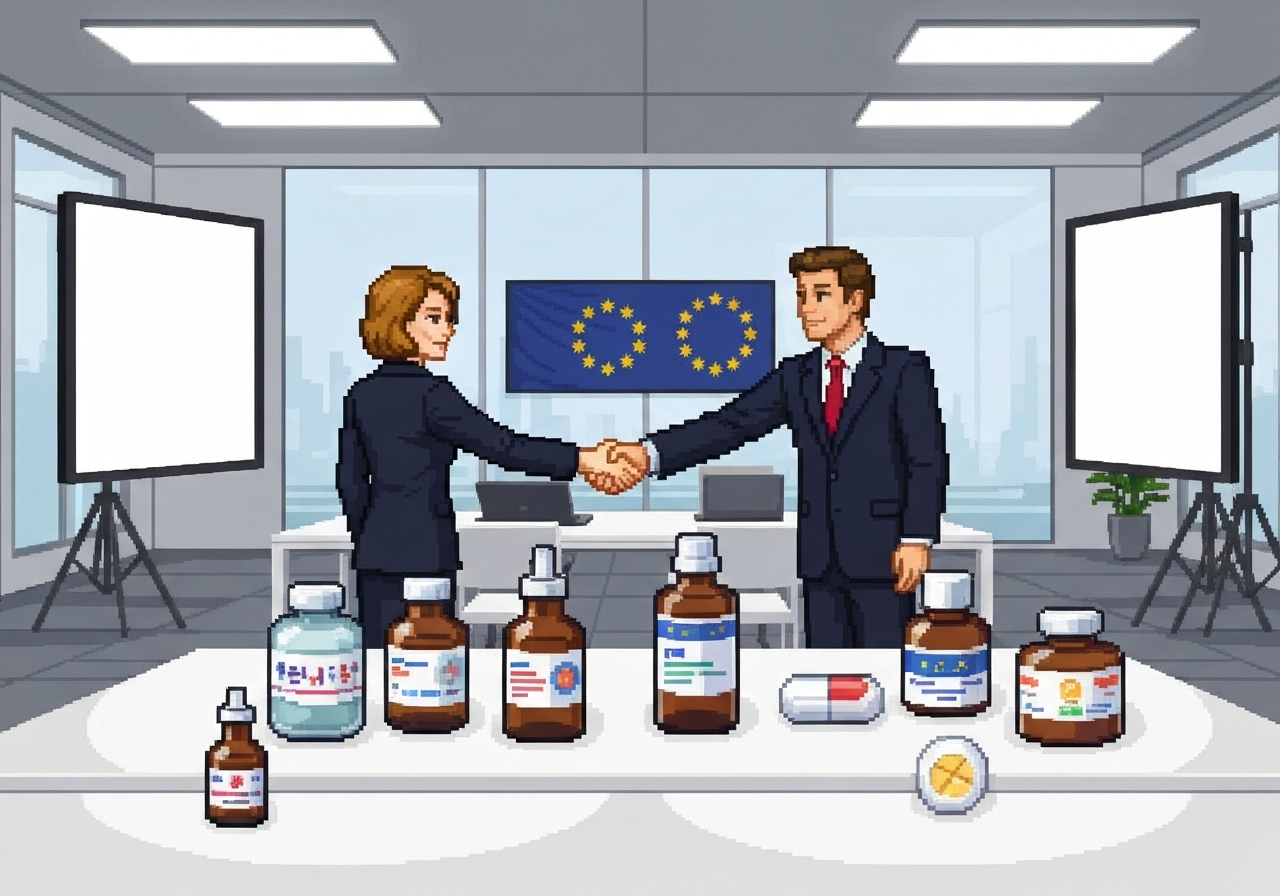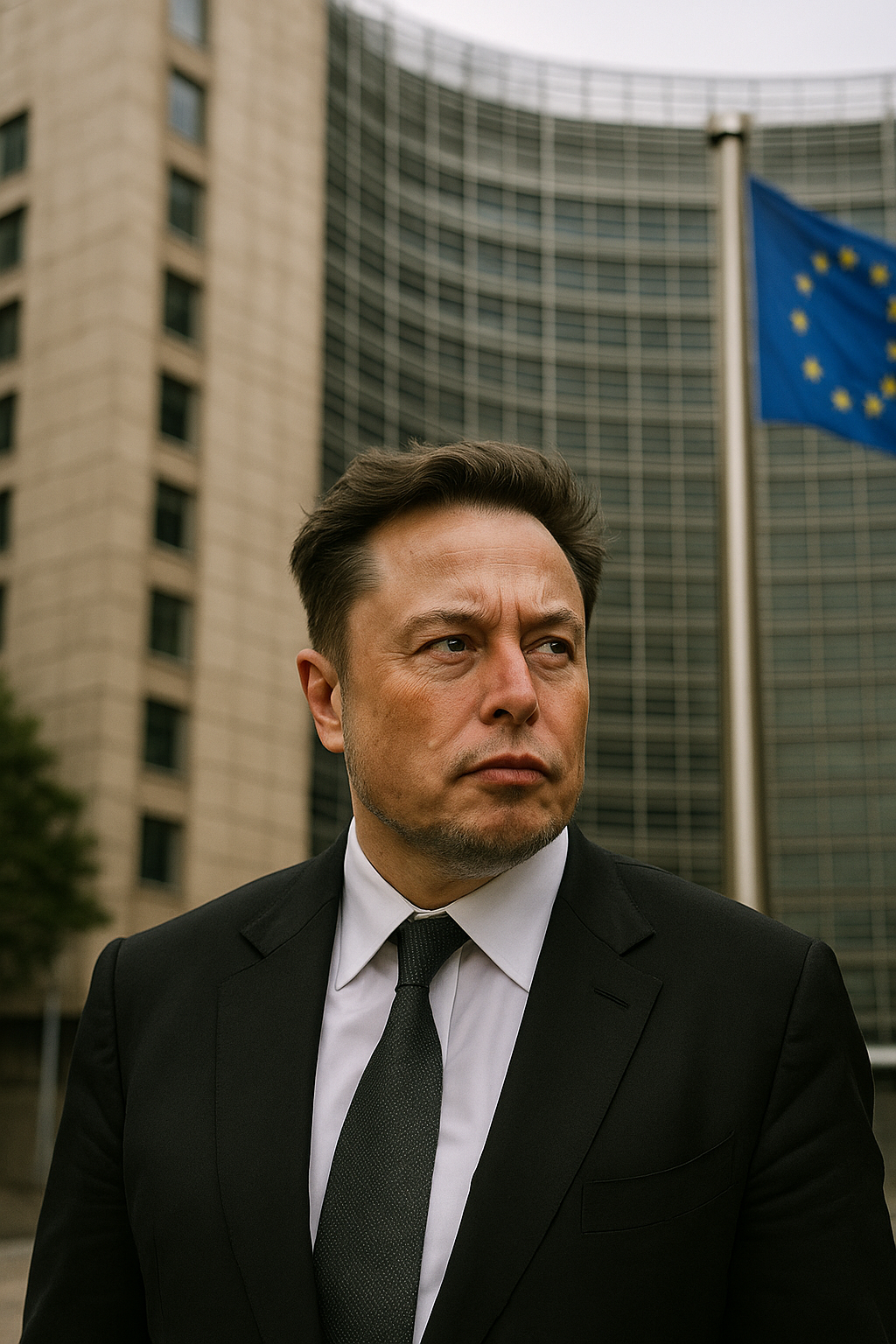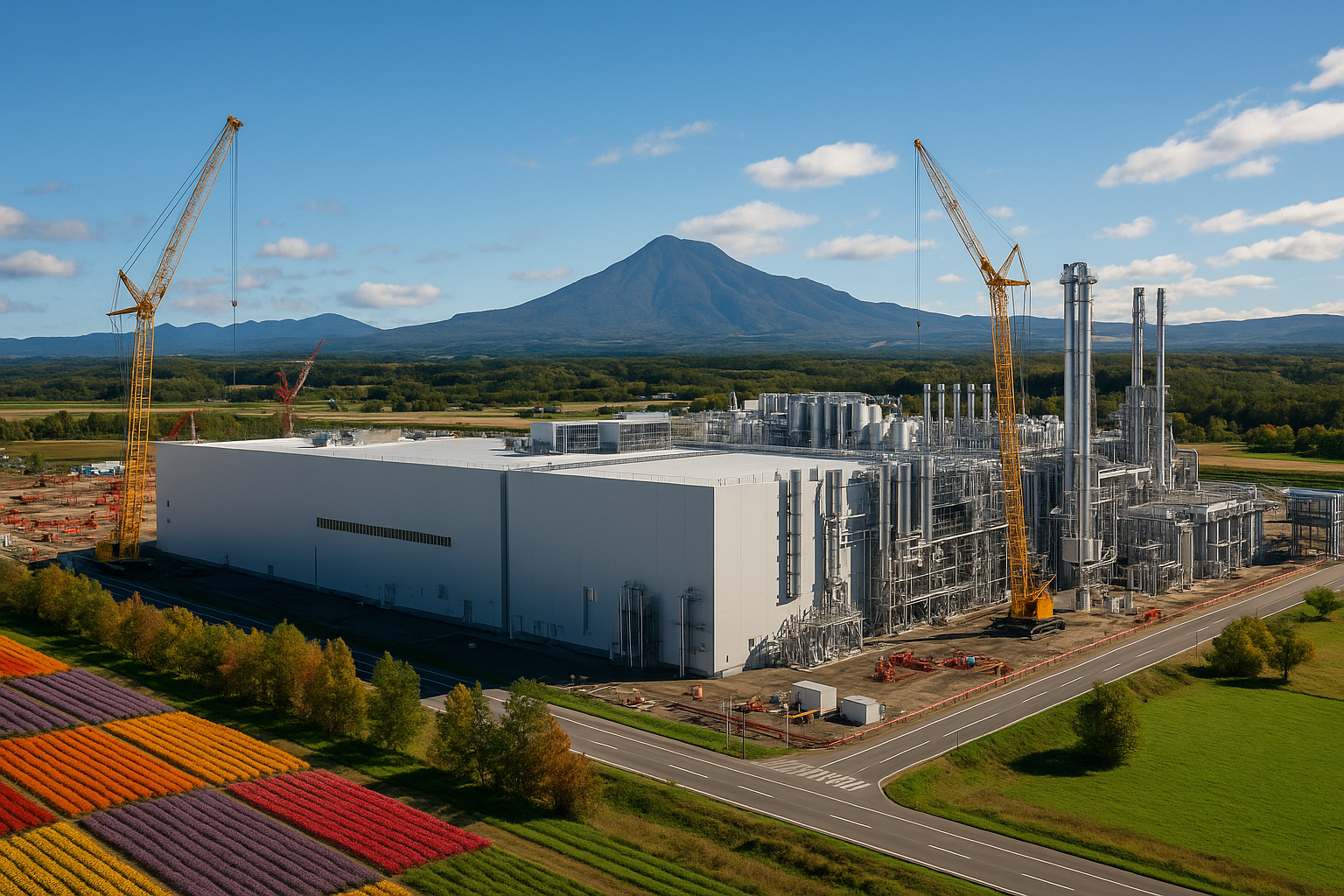Key Highlights
Here is a summary of the key developments in the US-EU trade deal:
- US President Donald Trump has backed down from a threatened 250% tariff on pharmaceutical imports from the European Union.
- A new trade deal caps tariffs on both EU pharmaceuticals and semiconductors at 15%.
- The agreement was confirmed in a joint statement by Trump and EU Commission President Ursula von der Leyen.
- The deal is conditional on the EU passing legislation to eliminate tariffs on US industrial goods.
- This agreement provides stability and creates “historic access” for American producers to European markets.
Introduction
US President Donald Trump has decided not to put heavy tariffs on medicines coming from the European Union. This came after some tense talks between the White House and the European Commission. They both shared that they made a new trade deal. This stops a possible trade fight in the drug industry.
This deal was first talked about by President Donald Trump and European Commission President Ursula von der Leyen. Now, the trade between the two sides will be steadier, but there are special rules that they both have to follow.
Background to the Proposed 250% EU Pharma Tariff

Last month, people started to worry about higher tariffs after President Donald Trump said that pharmaceuticals were not part of the first trade deal. Because of this, european exports in this business could face steep new taxes. The White House even talked about a tariff rate that could reach up to 250%.
The main reason for these higher tariffs was to make more companies produce things at home. Donald Trump said, “We want pharmaceuticals made in our country.” He wanted to help american producers more than eu exports. This move is also part of a bigger plan to bring important factory jobs and work back into the country.
Origins of the Tariff Plan and Underlying Motivations
The idea behind these high tariffs was to use economic pressure to reach certain trade goals. President Trump’s team often talked about higher tariffs. They used this talk to get trading partners to come to the table. The goal was to change trade agreements in a way that would help the United States more.
One main reason for this was the wish to lower how much the US depends on other countries for important goods. EU member state Ireland is a major pharmaceutical exporter to the US. So, the higher tariffs would make European goods cost more. This would push companies to make more things inside the United States. The plan was to go after key European countries that are part of the pharmaceutical business.
In the end, the United States stepped back from the 250% tariff as part of a bigger agreement. The US agreed to set a lower maximum tariff. In return, the EU started a legislative process to end its own tariffs on some us export tariffs. This helped both sides to say they got something good and kept them from having a bad trade fight.
Initial Reaction from the Pharmaceutical Industry and Stakeholders
The first idea to put a 250% tariff in place shocked the global pharmaceutical sector. Many leaders and other people in this field spoke up right away. They said this big change would make it hard for people who make the medicine and could stop patients from getting the drugs they need. There was a risk that years of steady trade might not last.
Many people worried about how this would hurt how the industry works and how patients get care. The European Federation of Pharmaceutical Industries and Associations (EFPIA) pointed out some big issues, like:
- A sharp rise in costs for people who need important medicine.
- Big problems in the global supply chain for medicines.
- Less money would be there for important research and new drug development.
- New treatments could be harder to get in the US.
Other groups also felt the problems. For example, US distillers talked about how they wanted a permanent return to zero-for-zero tariffs on spirits. They said not having this makes it hard to plan for future growth and invest in new ideas.
Key Details of the US-EU Deal on Pharma Tariffs
The US and EU have now set clear rules for tariffs on medicines. Under their joint agreement, there will be a 15% cap on tariffs for European Commission pharmaceutical products and semiconductors. Leaders from both sides, including European Commission President Ursula von der Leyen and US Secretary of Commerce Howard Lutnick, said this move means things will be more predictable.
Still, the deal has major points to think about. The US will only lower its tariff on European motor vehicles from 27.5% to 15% if the EU first drops tariffs on all US industrial goods. This includes items like bison meat and fresh fruit. Both sides see this step as important, and the joint agreement was talked about at the recent news conference.
New Tariff Caps and Scope of the Agreement
The new details of the trade deal reveal a significant de-escalation from the initial threats. The tariff rate for both EU pharmaceuticals and semiconductors is now capped at 15%, a figure more in line with the tariffs applied to other European goods. This provides a level of certainty that was absent just weeks ago.
The agreement also clarifies the treatment of different pharmaceutical products. While branded pharmaceuticals will face the 15% rate, generic drugs are set to be subject to the US Most Favored Nation (MFN) tariff rate, which is described as “effectively zero or close to zero.”
Implications for Other Sectors and Future Trade Negotiations
While pharmaceuticals were at the center of the dispute, this deal affects more than just that sector. The European semiconductor industry, for example, did not have to face a possible 100% tariff. Instead, its products now have the same 15% cap. This is good news for the european semiconductor sector. The industry is important to the global tech supply chain, so this cap gives them some relief.
As part of the deal, the EU agreed to drop tariffs on many US industrial goods and agricultural products. American producers of things like fresh fruit, pork, tree nuts, and bison meat will now be able to sell these to the EU without tariffs. US officials say this change opens up “historic access” for these goods.
But, not every sector gained from this deal. Wine and spirits were left out of the tariff change for now, and this upset many people on both sides of the atlantic. The french wine exporters federation said they may face “major difficulties.” The distilled spirits council in the US said there is no clear path for future growth yet. So, there was progress made, but some issues still need to be solved in later trade talks.
Impact of the Deal on Pharmaceuticals and Consumers

The deal sets a cap of 15% on pharmaceutical tariffs. This is good news for the industry. It gives some relief, especially for big hubs like Ireland. Ireland is known as a major pharmaceutical exporter, so this agreement works as an important shield for them against much larger tariffs that could have been a problem earlier. The stability from this deal can also have a good impact on pharma stocks. Now, people will not worry as much about sudden changes in the market.
For consumers, the picture is not so clear. This deal stops drug prices from going way up from a 250% tariff. That would have been bad for many people. Still, a 15% tariff is higher than what we had before. There may still be higher costs for certain medicines. This could affect how much families pay and the treatments they get.
Effects on Drug Prices, Market Access, and Industry Performance
The new 15% tariff on branded drugs will likely make medicine more expensive for people in America. This is not as high as the 250% that was possible earlier. Still, there will probably be higher medicine costs for treatments made in Europe. Generic drugs should not be much affected because their tariff rate is so low it is “effectively zero.”
For companies in the industry, this deal brings some predictability. That is needed for making plans and investing money. A company like ozempic manufacturer Novo Nordisk from Denmark can now feel more sure about getting into the US market. But some groups in the industry are still careful. Nathalie Moll, director general of the EFPIA, worries that the tariffs could take “billions of Euros away from medical research.” This could slow down new ideas in the future.
Financial markets are showing cautious optimism. The fact that the worst-case scenario did not happen has helped keep the industry steady. That stopped a big shock from hitting the field. The deal lets companies keep getting into the market, which is important for a global industry. This is an industry that depends on supply chains crossing many countries.
Conclusion
The stop of the planned 250% EU pharma tariff is a big moment in US-EU trade. This choice helps to ease worries for the drug industry right now. It also shows how things might go in later talks for other businesses. The new limits on tariffs should make things steadier for drug makers and for people who need medicine. This could change how much the medicines cost and how easy it is for people to get what they need. The deal shows there are many tough parts in international trade deals. Stay tuned as more news comes out about what this means for medicine and pharma.




